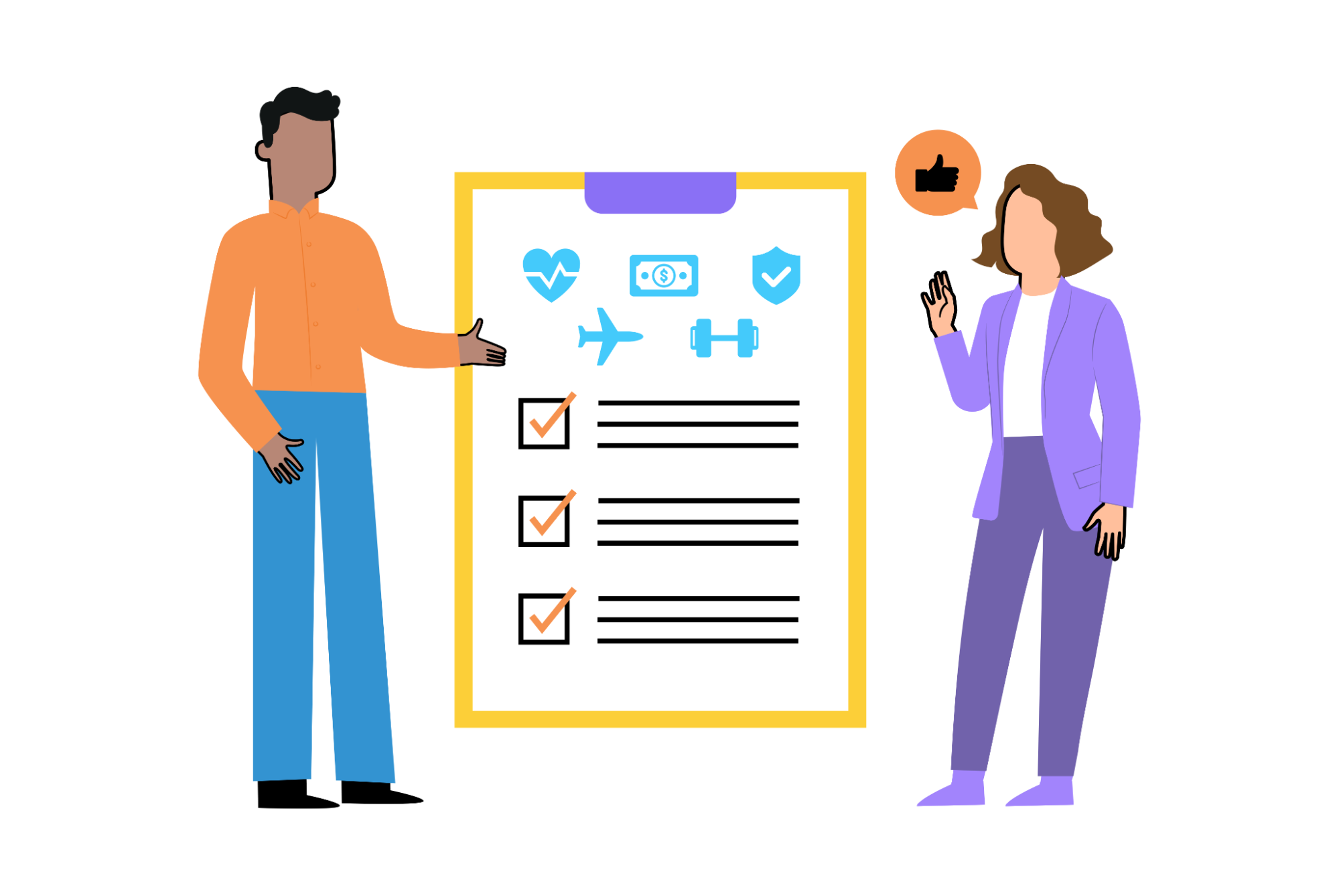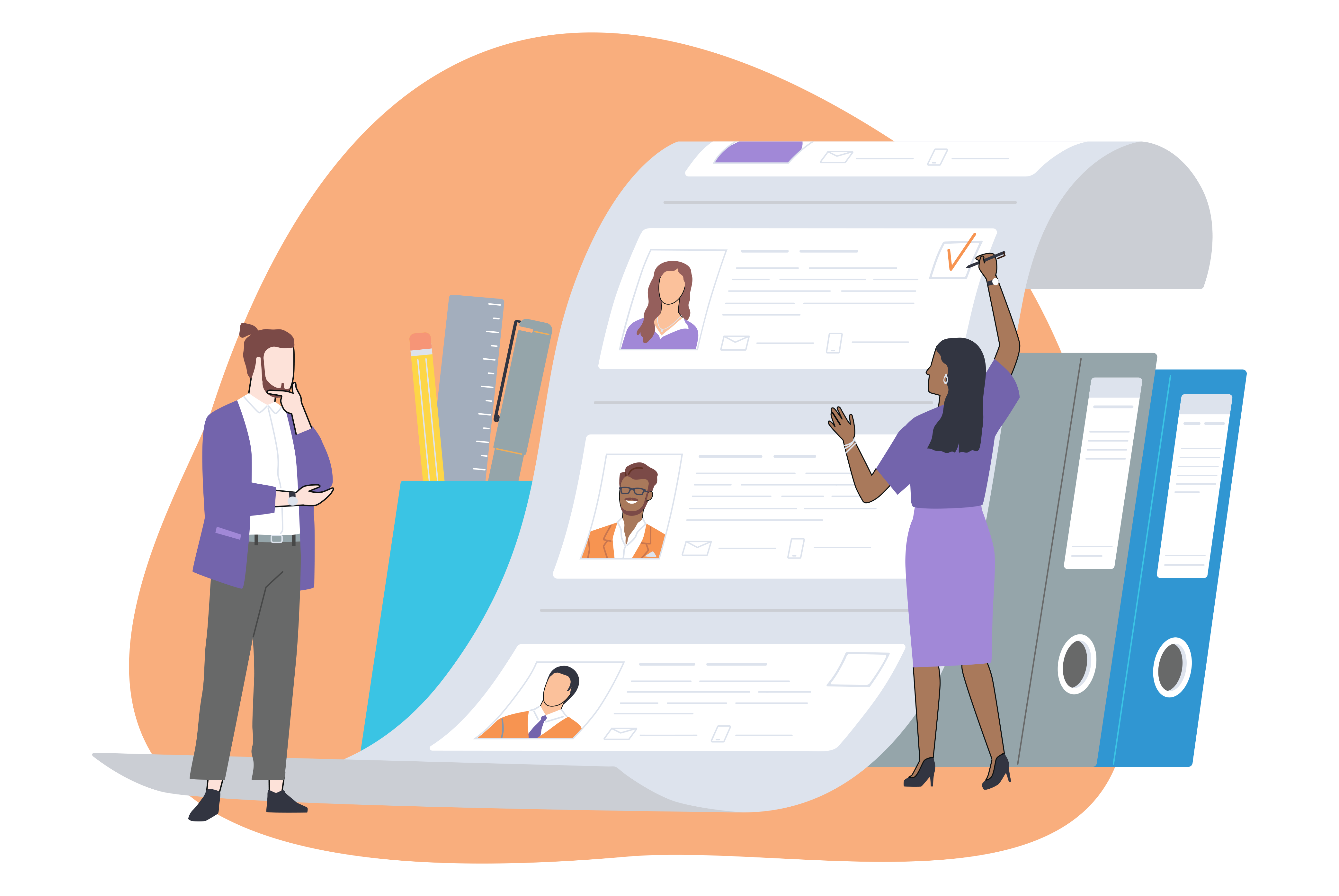To attract top talent, organizations must offer desirable candidates an offer that makes them want to join the team. While the salary will play a big role in whether or not a candidate says yes to your initial offer, another major factor to their acceptance are the types of benefits you offer — a bundle otherwise known as an employee benefits package. Read on to find out what an employee benefits package is, why they're important, and how your business can create an attractive one.

What Is an Employee Benefits Package?
An employee benefits package is a collection of benefits offered to employees that go beyond a simple salary. These benefits are generally programs and policies offered to employees and their families.
Traditionally, American employers only provided benefits such as health insurance and retirement plans. However, today, many companies offer a full suite of creative benefits to appeal to a wide range of demographics in their hunt for prospective employees.
Why Are Employee Benefits Packages Important?
Employee benefits packages are critical in today’s hiring market, as they serve as a powerful tool for attracting top talent. In today's competitive labor market, companies have to offer something special to attract talented workers. An attractive benefits package can be an essential part of this equation.
Retaining talent is also easier with a great employee benefits package. After all, keeping employees with your company for the long haul and reducing turnover rates can be highly beneficial for the company’s bottom line.
Companies also need to put effort toward communicating effectively with employees about their benefits package. Sometimes, workers fail to take advantage of the benefits they’re given simply because they don’t know these benefits exist or because they’re unsure of how to access them. For these reasons, it’s important to educate employees about their benefits so that you can ensure their happiness and maximize retention.
What to Add to an Employee Benefits Package
Employee benefits packages typically include health, dental, and vision insurance as well as retirement plans. Paid time off — whether in the form of sick days, vacation time, or holidays — is also a common feature. Below we’ll run through some of the most common benefits being offered today.
Health and Wellness Benefits

Health and wellness benefits are a top priority for many job seekers. A comprehensive benefits package usually includes dental and vision insurance add-ons as well. Additionally, employers may want to offer alternative health and wellness benefits, such as a gym membership, wellness programs, and mental health services. These benefits can help keep employees healthy and improve their overall well-being, both mentally and physically, leading to increased productivity and job satisfaction.
Financial Benefits

Financial benefits can help employees plan for their future and manage their finances more effectively. A good example of a financial benefit is a 401(k) matching program, which significantly boosts employees’ retirement savings thanks to a fixed contribution. Other financial benefits include life insurance, disability insurance, and flexible spending accounts.
Work-Life Balance Benefits

Providing work-life balance benefits is becoming increasingly important for employees. These benefits can include paid time off (PTO) for vacations, personal days, and sick days, as well as flexible schedules and remote work options, such as extensive paid parental leave. Offering these benefits shows employees that their employer values their personal life and recognizes the importance of work-life balance.
Career Development Benefits

Investing in employees’ career development can lead to increased job satisfaction and employee retention. A benefits package should include training and professional development opportunities, such as conferences, workshops, and online courses. Employers may also want to offer tuition reimbursement or a mentorship program to support employees’ career growth.
Other Perks

Finally, employers may want to consider offering other perks to improve employee morale and increase job satisfaction. These can include free snacks, team-building activities, and fun events. For example, some employers offer on-site massages, meditation rooms, and game rooms as part of their benefits package. In contrast, fully remote teams may offer events like virtual happy hours, time dedicated to yoga and mindfulness, and trivia games.
Other benefits offered by some companies include:
Bike-sharing programs
Pet insurance
Outplacement assistance
Four-day work weeks
Student loan assistance
Mental health workshops
Volunteer days
Tips for Creating an Attractive Employee Benefits Package
As a business owner or HR manager, you might be interested in putting together a comprehensive employee benefits package, but doing so is easier said than done. You even might be wondering where to begin.
Here are some tips on creating an attractive employee benefits package to help you attract and retain the talent you seek.
Understand Your Workforce

What is the general demographic of your workers? A competitive benefits package is far from a one-size-fits-all proposition, and the age of your workforce is a major factor. Different benefits appeal to different age brackets. For example, a younger workforce may be more enticed by travel stipends and gym memberships, while a more mature workforce might prioritize family leave, comprehensive retirement plans, and medical benefits.
Utilize Focus Groups and Surveys
Consider utilizing focus groups and surveys to gather employee feedback when creating or revising your employee benefits package. Does your team want flexible time off, a more robust 401(k) contribution, or perhaps a professional development program? You’ll never know without sourcing their wants and needs directly.
Ask employees what benefits they value most, what they want to see added or changed, and what they consider non-negotiable. This feedback is invaluable in crafting an employee benefits package that reflects the needs of your unique team.
Determine What Benefits Are Actually Being Used

If you already have a benefits package in place, you should create a questionnaire to see what benefits are being utilized. By scaling the questionnaire from one to five, you’ll quickly ascertain which benefits are preferred and which are being misspent. By asking, you’ll know much quicker than guesswork and can create a plan of action to rectify.
Aim to Provide Value to All
This one might seem like a no-brainer, but you’d be surprised by how many companies spend money on something relevant only to a portion of their employees. These benefits can be as arbitrary as a stipend for home office equipment or as essential as vision care. However, you and your employees may question the investment if they're underutilized. In offering a more personalized plan, you can deliver huge value to your employees and their families, with the end goal of boosting productivity and morale.
Consider Remote Work Benefits

As remote work increasingly becomes the norm, business leaders should consider adding remote work stipends to their suite of benefits. Remote work benefits can range from upgraded home technology and faster Wi-Fi to paying for all — or a portion — of childcare expenses for working parents. These thoughtful gestures can have incredibly large payoffs, as their chances of deeply resonating with your remote workforce are high.
Prioritize Diversity, Equity, and Inclusion
Diversity, equity, and inclusion — or DEI — have been hot topics in the business world in recent years. In fact, three out of four job seekers want to work for a company that promotes these values, according to a survey by Glassdoor, with nearly a third of those polled saying they would not apply to a job if there were a perceived lack of diversity among its workforce. While a common reaction is to be worried about losing out on talent, the merits of promoting DEI cannot be overstated. In one study, Gartner found that inclusive teams improve overall performance by as much as 30% in high-diversity environments.
By highlighting these values in your benefits package, you will telegraph to prospective employees that having a diverse and well-rounded team is of the utmost importance. And if you believe in this, you will attract job seekers who do, too.
Offer Free Healthcare

One of the most important benefits you can offer is access to quality healthcare, including dental and vision. Not only does it show that you care about your employees’ well-being, but it also shows you’re willing to invest in their health. You could also consider offering mental health benefits, such as a free counseling service, to support employees’ overall well-being.
Providing free healthcare takes this notion a step further. While this idea might seem cost-prohibitive to some companies, the cost of healthcare can be a significant burden for your workers. Relieving this concern will go a long way to making your company competitive in the job market.
Shine a Spotlight on Soft Benefits
While health insurance and other financial benefits are important, today, it’s equally as important to offer soft benefits, such as flexible work arrangements and professional development opportunities. These benefits can go a long way in ensuring your employees feel valued and appreciated. The byproduct is producing a strong work culture that emphasizes collaboration and accountability.
Flexible work arrangements, such as unlimited PTO or flexible hours, can be especially attractive to employees balancing work and personal responsibilities. This can increase job satisfaction and reduce stress, leading to higher productivity and overall job performance.
Let Your Employees Choose

Allowing employees to have some control over their benefits can make your workers feel more invested in the company. Consider an annual poll that allows your employees the discretion of choosing what new voluntary benefit they would enjoy using most. After the polls close, the majority wins — and that perk is added to the line-up of new benefits for the following year.
Alternatively, you could offer a set budget, and employees can choose how to allocate those funds towards the benefits that resonate most, such as a personal travel stipend or a gym membership. This way, employees have the flexibility to choose the benefits that best suit their needs and lifestyle.
Find the Best Candidates on Joblist
Organizations must craft their employee benefits packages with care and attention to attract desired talent and keep them for the long haul. An attractive benefits package makes employees feel valued at work — and helps them feel more connected with your company's culture and mission.
Once you’ve finalized a solid employee benefits package, you’re ready to start your search for the best candidates. Try our “Post a Job” feature to find your next team member today!





